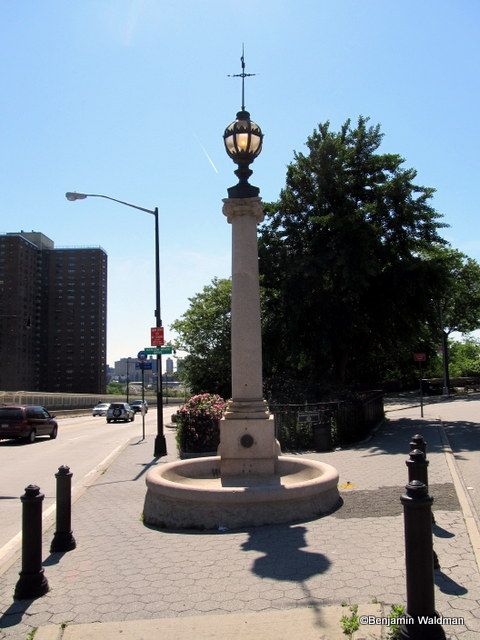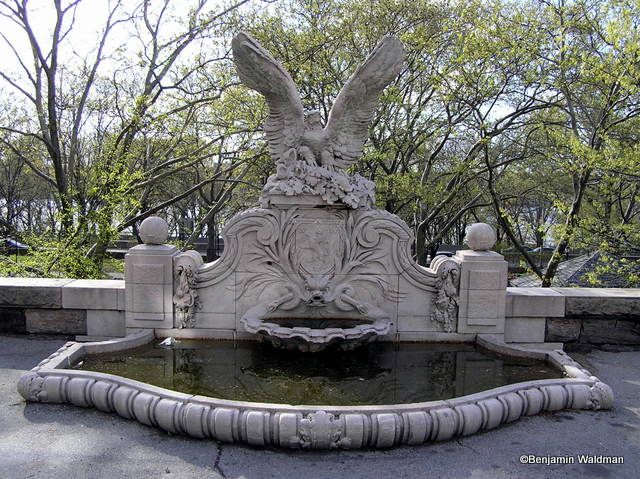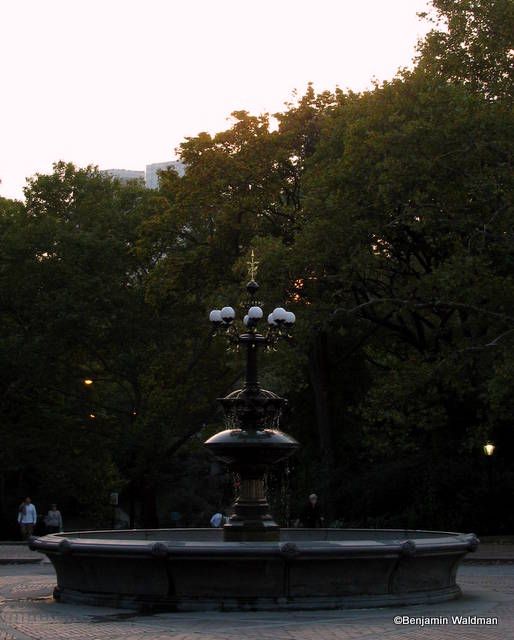Last Chance to Catch NYC's Holiday Notalgia Train
We met the voices of the NYC subway on our nostalgia ride this weekend!



St. Nicholas Place and West 155th St.
Until the 1910s, horses outnumbered automobiles in New York City. Today, outside of Central Park’s tourist driven hansom cab industry, and the New York City Police Department’s mounted unit, the New York City horse, has almost become extinct. The Bridal Path, in Central Park, has become pedestrianized, and Manhattan’s last stable, The Claremont Riding Academy, which was the oldest continuously operated equestrian stable in New York City, closed in 2007. However, there are still remnants of the New York City’s former horses. The most interesting, and most often overlooked, remains are the City’s Horse Fountains. Throughout the City, a handful of ornate fountains and simple troughs have outlived their intended recipients.
John Hooper willed the cities of Brooklyn and New York $10,000, when he died in 1889, to construct two fountains “whereat man and beast can drink.” In 1894, with the financial assistance of the Washington Heights Association, a fountain was erected at the intersection of Saint Nicholas Place and West 155th Street. The fountain, designed by George Martin Huss, consists of a large round horse trough, carved pedestal drinking fountain and a central Ionic column topped by an ornamental globe-shaped lantern.
In 1935, the City considered relocating the fountain to a bridle path where it could be used by horses, but the plan was never realized. In 1981, the lantern was destroyed and the column was damaged by vandals. The rest of the fountain was placed in storage until it was restored.

Riverside Park
Robert Ray Hamilton, a great-grandson of Alexander Hamilton, bequeathed $9,000 for the creation and installation of the Hamilton Fountain. The fountain was designed by Warren & Wetmore and dedicated in 1906, in Riverside Park. It is composed of an ornate fountain surmounted by an eagle and a simple marble basin in the park, which was forgotten until it was rediscovered in 2008. Like the City’s other horse fountains it fell into disrepair. It was restored in 2009.
 Cherry Hill Fountain in Central Park
Cherry Hill Fountain in Central Park
The Cherry Hill Fountain, in Central Park, was designed by Jacob Wrey Mould and unveiled in 1860. This fourteen foot horse fountain was restored in 1998.
The Algernon Sydney Sullivan Fountain, located in Van Cortland Park, was a gift of New York citizens and friends of Mr. Sullivan. Sulivan was a “Jurist, Statesman, Orator” according to the fountain and in 1879, along with William Nelson Cromwell formed the eponymous firm of Sullivan and Cromwell. This horse fountain was designed by Frank Wallis and Jonathan Scott Hartly in 1906.
The Evangeline Blashfield Fountain was given to the City in 1919 by the Municipal Art Society to the City for the Queensboro Bridge Market. Evangeline Blashfield came up with the idea for the fountain since she “was concerned about the fact that the vendors and their horses, who, after the Queensboro Bridge was completed in 1908, carted produce from the wilds of Queens to sell at the Bridgemarket, didn’t have an adequate source of water” While Blashfield died six months before the fountain was dedicated, she vision was realized. The fountain possesses a brilliant mosaic depicting the allegorical figure of “Abundance,” designed by Edwin H. Blashfield. After the Bridgemarket closed in the 1930s, the fountain fell into disrepair and eventually moved into storage. It was restored in 2002.
In 1907, Edith Bowdoin, and the ASPCA, sought “to erect a large number of simple, inexpensive drinking troughs [for man and beast] in the most congested sections of the city where they are most needed.” Only three remain today. One is located on Northern Boulevard between Main Street and Linden Boulevard, one on Butler Street (outside of the ASPCA’s former headquarters) and one in Manhattan’s Grand Army Plaza (abutting Central Park).—A second horse trough can also be found in Central Park on Sixth Avenue just north of 59th Street.
Subscribe to our newsletter